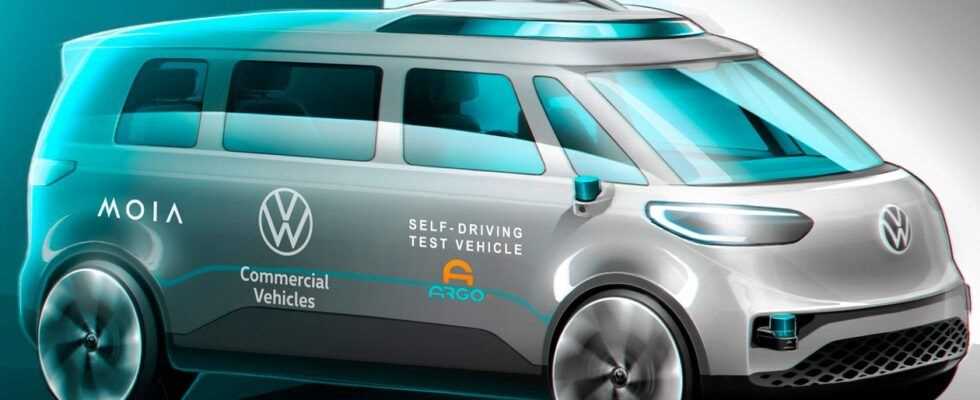Following the example from Pennsylvania, Volkswagen wants to be on the road with autonomous vehicles practically on our doorstep next summer – in the Munich area. They are prototypes based on the future VW ID.Buzz, which is planned for use as a self-driving shuttle and transporter, among other things. The autonomously driving electric vans will then go into commercial operation from 2025 with the Group’s subsidiary Moia in Hamburg.
For Volkswagen, light commercial vehicles are the first logical place of application for the autonomous transport of people and goods. Accordingly, responsibility for development in the group was also assigned to the commercial vehicle department in Hanover. For the integration of the level 4 technology into the fully electric ID Buzz AD, VW got active help from the USA and invested a billion dollars in Argo AI. The tech company, which was only founded in 2016 and is sponsored by Ford with the same amount, is currently developing what it describes as “the safest, most intelligent and most scalable self-driving system”.
Test site at Munich Airport
To this end, Argo AI has been testing in six US cities since 2018, collecting data, creating high-density 3D maps and simulating scenarios on the computer. “We consider our test program to be the largest for inner-city driving,” says Argo AI boss Bryan Salesky, who previously headed hardware development for Google’s self-driving project. In the summer of this year, Munich will be the first European city to join. Near the airport there, Argo has just set up a nine-hectare test area for the special features of European traffic.
Extremely strong sensors
Argos test vehicles, including a VW T6, are equipped with a combination of cameras, radar and so-called lidar systems (light detection and ranging) that work with light waves. The US company is particularly proud of a self-developed lidar that can not only capture objects from a distance of up to 400 meters, but also depicts them in photo-realistic resolution. Its patented scan mode is intended to detect even the smallest light particles (the size of a photon), so that even very weakly reflecting objects are detected and very precise representations of the environment are possible. This means that the autonomous vehicles can then merge into busy lanes, maneuver in narrow streets with oncoming traffic or show consideration for cyclists and pedestrians when turning. And that day and night, seven days a week, whatever the weather.
Moia shared taxis in Hamburg are becoming autonomous
VW also has very specific plans for the commercial use of the future self-driving technology. The first autonomous ID Buzz AD will be on display as Moia shuttles in Hamburg from 2025. Since April 2019, the group subsidiary in the Hanseatic city has been offering a shared taxi system with a specially developed, fully electric vehicle fleet, which has now grown to 500 vehicles, and which has become the largest all-electric ride pooling service in a short time with over three million journeys all of Europe – until Corona brought business to a standstill.
ampnet
